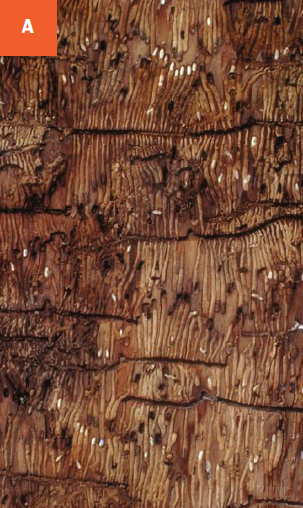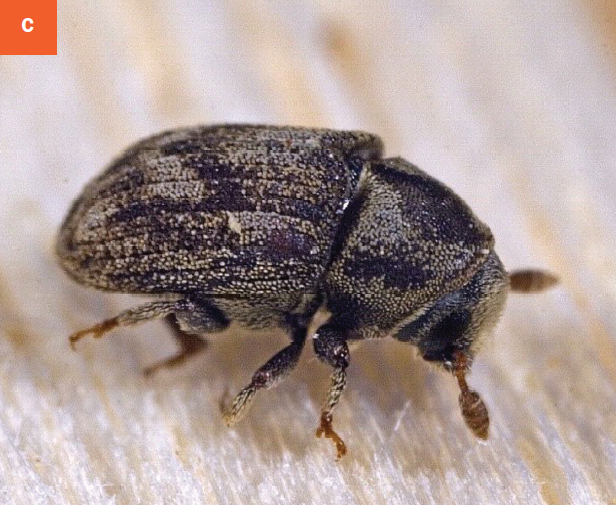Ash Bark Beetles
Hylesinus spp.
HOST Ash
DAMAGE/SYMPTOMS The small beetles (three to four millimeters) make a pattern of ventilation holes that form a ring around the branch. They prefer to breed in recently cut, broken, and stressed trees. They also infest trees weakened by mechanical injury, disease, or fire.
LIFE CYCLE The adult bark beetles emerge in the spring and fly to trunks or limbs of recently felled, dying, or weakened trees. They mate and lay eggs in branches. The larvae burrow under the bark where they continue to develop and feed, pupate, and then emerge as adults. The larvae either overwinter under the bark or the adults cut niches in the outer trunk in which they overwinter.
MANAGEMENT Stressed trees will attract the beetles. Infested branches can be identified with the presence of wilted leaves. Pruning is most successful in the spring before the adult beetles emerge from the bark. Maintain the health and vigor of the tree and prune infested branches. Preventive insecticides can be applied during adult egg-laying periods in mid-spring. An additional insecticide application can be applied in late summer around the base of the trunk to kill populations of overwintering beetles. Insecticides with the active ingredients carbaryl, bifenthrin, and permethrin can be used.
A Ash bark beetle galleries under the bark. B Beetle exit holes. C Eastern ash bark beetle adult.



